The Queen in Yellow – An Eldritch Tribute to Duvel Citra
When an apocalyptic adventure set in the 1920s calls for a brew worthy of Hastur’s grand return, one turns to the classics. Inspired by the complex yet approachable “Duvel Citra,” The Queen in Yellow emerged as an homage to that style, albeit with a dash of forbidden lore and a touch more freedom in the design. The goal was clear: to capture the classic Duvel style but with a few subtle enhancements—deepening the hops profile and whispering secrets from the King in Yellow himself.
Brewing The Queen in Yellow starts with tradition. This beer would be meticulously lagered for two weeks days before a significative dry-hopping session that brings citrusy, almost ethereal notes to the surface. With maturation at a cool 10°C, the flavours will coalesce, yielding a balanced yet mysteriously layered brew, inviting its drinker to taste not only the beer but also the shadows of an eldritch world that brushes so close, one almost feels the pull of Carcosa itself.
The recipe includes the familiar bright, citrus-driven hops of a Duvel Citra, paired with a body that’s slightly fuller—just enough to let it linger, like an echo of the Yellow Sign’s call. Hints of lemon zest dance alongside the subtle malt sweetness, and a balanced bitterness rounds out the experience. As the players sip, perhaps they’ll feel the weight of destiny, the urgency of the approaching doom, and maybe, just maybe, the gaze of the King in Yellow from the edges of their glass.
Here’s to those who face the unknown, who confront cosmic dread, and who do it with a frothy pint at hand.

The recipe is scaled for a 11L fermenter size, starting from 12L of mash water and using 5L of water for sparging. A volume of 14L is recovered pre-boil and approximately 10.3L after boiling, allowing 9.5L in the fermenter. The secondary fermentation takes place in a 8L fermenter allowing a yield of 24 bottles at the end of the sequence. While these are probably uncommon volumes, the recipe is easily scalable to your system with little effort.
Chapter 1: Malt Selection
For The Queen in Yellow, a Belgian Tripel with a twist, the foundation lies in a thoughtfully chosen malt and grist selection that balances classic richness with a lighter body, allowing hop character to emerge without sacrificing the robust spirit of the style.

Maris Otter – the base grain
The cornerstone of this Tripel is Maris Otter MD, a celebrated British barley strain known for lending pale ales a rounded, fuller malt flavor. At 75% of the grain bill, Maris Otter brings depth that diverges slightly from the traditional Pilsner malt used in many Belgian Tripels. Its contribution is a subtly nutty, warm malt flavor that supports the beer’s complexity, grounding it in an earthy richness suited to our apocalyptic theme.
Carapils – 5%
While Caramel malts aren’t a typical ingredient in the Tripel style, a restrained addition of Carapils at 5% improves foam stability and body. Known for its high dextrin and protein content, Carapils adds a faint touch of sweetness and structure, enhancing the mouthfeel without significantly affecting the color or detracting from the style’s traditional lightness. This addition ensures a satisfying, creamy head, a fitting crown for The Queen in Yellow.
Candi Syrup (Light) – 10%
Staying true to Belgian brewing practices, we include 10% light Candi Syrup. This addition is vital for both flavor and fermentation, as it lightens the body, dries out the finish, and provides subtle, honey-like sweetness. The syrup’s fermentability also aids in reaching that sought-after attenuation without overwhelming the beer with malt character.
Flaked Rice – 10%
A subtle but deliberate divergence, 10% flaked rice is included to impart a mild sweetness and to slightly lighten the malt backbone. The rice provides a whisper of softness, toning down the malt profile and leaving room for the dry hopping’s citrus brightness to shine through. Its use in this recipe both enhances drinkability and adds a unique texture, aligning with the beer’s intention to bridge the world of Belgian tradition with eldritch innovation.
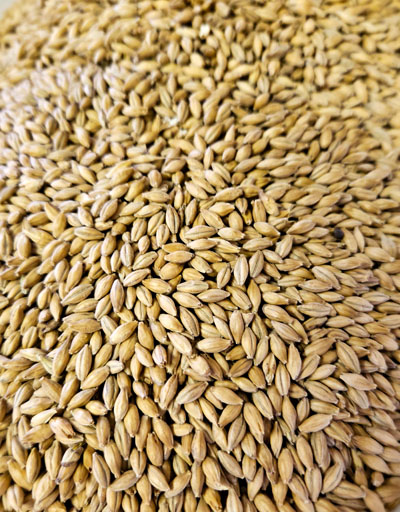
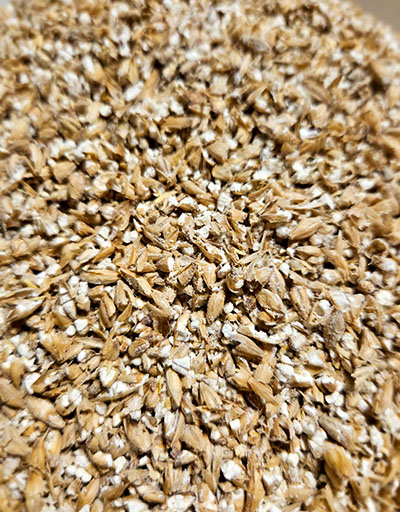
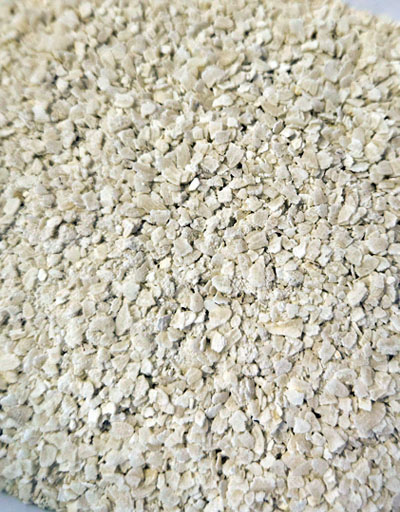
Maris Otter Malt
Crushed Malt
Flaked Rice
Chapter 2: Yeast Selection
When crafting The Queen in Yellow, choosing the right yeast strain was crucial to achieve the hallmark profile inspired by Duvel — a delicate balance of fruity and phenolic notes, restrained sweetness, and a crisp finish that allows hop character to shine. After researching the yeast strains known for producing the classic Duvel profile, we found that Fermentis SafAle WB-06 presented a compelling option for this purpose.
Fermentis SafAle WB-06
Although traditionally classified as a wheat beer yeast, SafAle WB-06 offers qualities that align well with the Tripel style. Known for its subtle fruity esters and mild phenolic notes, WB-06 creates a distinct yeast character without overshadowing other elements in the beer. This yeast should bring a soft background of clove and banana-like esters — both of which harmonise with the malt complexity and accentuate the faint hints of Candi Syrup. The yeast’s restrained phenolics add a slightly spicy, peppery note that resonates well within the broader flavor profile, subtly enhancing the mystery and allure that Hastur’s lore suggests.
Find more information about this yeast here.
High Attenuation, Clean Finish and Hops compatibility
Another advantage of WB-06 is its high attenuation, which is essential for achieving the dry finish typical of the Tripel style. A high attenuation means that most of the sugars are fermented, creating a cleaner profile that lets the hop presence emerge and contributes to the crispness associated with Duvel-inspired brews. This makes it an ideal choice for balancing the beer’s maltiness with a leaner body, all while enhancing drinkability.
The yeast character is fruity and phenolic but mild enough to let the hops’ citrus brightness shine. This harmony ensures that the yeast contributes complexity without overwhelming, crafting a beer that celebrates both Belgian traditions and the unique interpretations fitting for a brew dedicated to The Queen in Yellow.
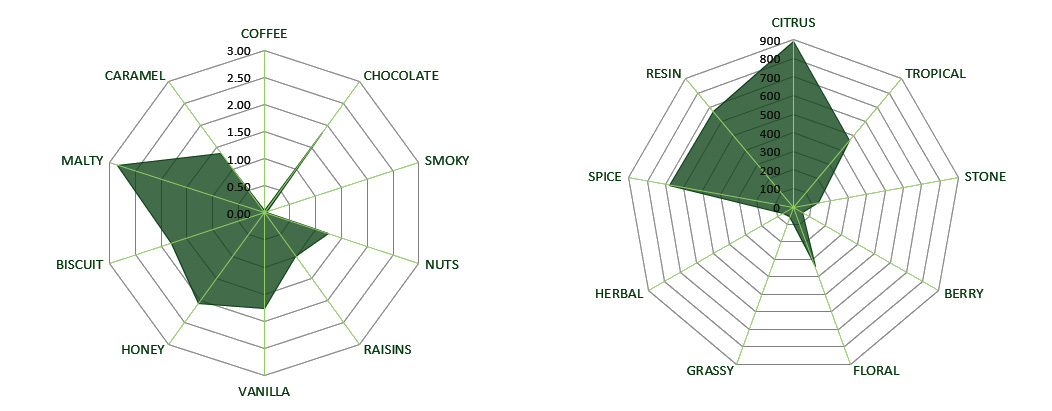
Malt Profile (left) & Hops Profile (right)
Chapter 3: Hop Selection
Achieving a target IBU of 40, the hop selection for The Queen in Yellow revolves around a citrus-forward profile with layers of floral and earthy nuances, all while paying homage to the intense, aromatic nature of Duvel Citra. Citra takes the lead in both aroma and flavor, supported by Willamette and Saaz for a balanced bitterness and nuanced background.
Willamette for Bittering
Willamette serves as the primary bittering hop in this Tripel, setting a firm but gentle foundation. Known for its spicy, herbal character, Willamette introduces a soft bitterness that contributes depth without overpowering. The restrained bitterness enhances drinkability and makes way for the fruity and floral notes to take center stage.
Citra and Saaz for Aroma
As the “queen of the ball,” Citra hops feature prominently in the late additions, bringing an intense burst of citrus—think lemon, lime, and a touch of tropical fruit. Added towards the end of the boil and in a 20-minute whirlpool session at 80°C, Citra’s high oil content infuses The Queen in Yellow with bright, juicy notes that dominate the aroma and flavor. To complement Citra, Saaz hops add a subtle spiciness and mild floral character, adding a hint of Old World elegance to the beer’s profile.
Dry Hopping with Citra
To achieve the intense Citra characteristic that was central to our goal, a final dry hopping step brings this beer to life. By layering Citra in dry hopping, The Queen in Yellow builds on its citrus profile with deeper aromas of tropical fruit, melding with the malt and yeast complexity to create a unique experience. This dry hopping step ensures that the beer’s flavor and aroma are not only bright but unmistakably bold, a fitting tribute to the lore of Hastur and the mysteries of Carcosa.

Chapter 4: Water Profile
For The Queen in Yellow, establishing the right water profile was essential to balance malt, hops, and yeast characteristics while keeping the flavors crisp and lively. Aiming for a 1:1 sulfate-to-chloride (SO₄²⁻/Cl⁻) ionic ratio, we enhanced the water using potassium chloride and magnesium sulfate to create a relatively balanced profile, which complements both the malt body and the hop-forward nature of this Tripel.
Calcium (Ca²⁺) as a Natural Advantage
The naturally high calcium levels in the local water—115 mg/L—were maybe on the high side for brewing a Belgian Tripel. Calcium plays a significant role in yeast health, promoting stability and reducing potential haze in the finished beer. With levels already suitable for this style, the calcium-rich water was used without additional treatment, providing structure and helping to maintain a clear and well-defined final product.
pH Adjustment for Optimal Brewing
Achieving a pH level of approximately 5.4 was a critical goal in creating The Queen in Yellow, as it allows for optimal enzyme activity during mashing and contributes to the beer’s brightness. Phosphoric acid (80%) and citric acid were used to gently bring down the pH, creating a smooth mash environment that maximises both malt extraction and hop expression.
Ascorbic Acid for Oxidation Control (optionnal)
A small addition of ascorbic acid provided an antioxidant benefit, minimising oxygen exposure and helping to preserve the beer’s freshness. This touch of ascorbic acid reduces oxidation both during brewing and throughout the maturation period, enhancing the long-term stability of the flavor and aroma. With the prominent hop character in The Queen in Yellow, this small adjustment safeguards the beer’s citrus brightness, keeping its character fresh and vibrant.
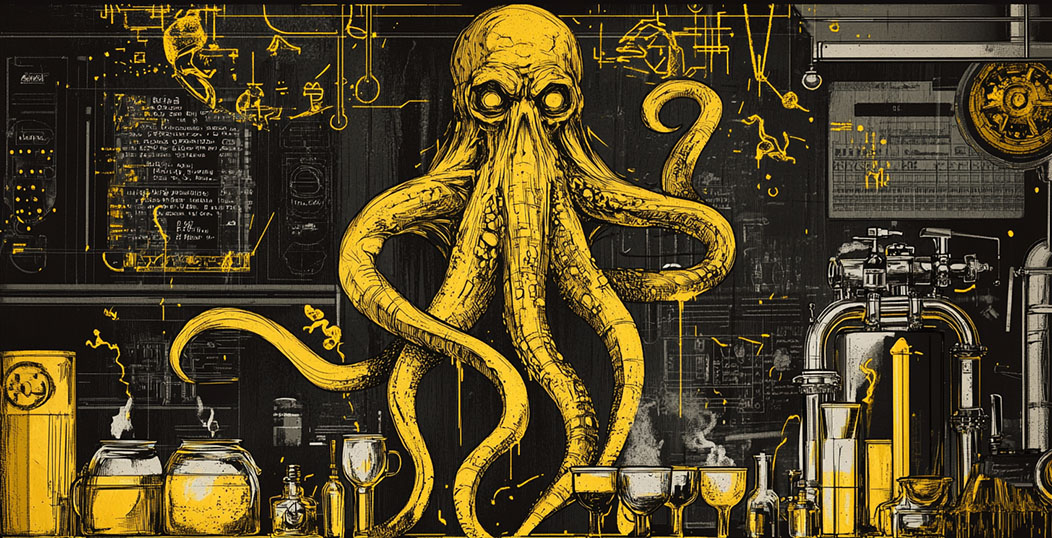
Chapter 5: Process Parameters
The brewing process of The Queen in Yellow was crafted with meticulous attention to detail, from mashing to fermentation, to achieve a beer rich in flavor and texture while honoring the balance of a Belgian Tripel. Below are the steps and key parameters that brought this Duvel-inspired Tripel to life.
Mashing Schedule
To extract the desired flavors and fermentable sugars, a multi-step mashing schedule was employed:

parging and Boiling
Sparging was done with water heated to 76°C, effectively rinsing the grains and gathering the remaining sugars. The collected wort was then subjected to a 90-minute boil, which served to sterilise, concentrate flavors, and bring out the desired hop character. Salts from the water profile (potassium chloride and magnesium sulfate) were added after sparging to stabilise the ionic balance.
Hop Additions
Achieving a calculated IBU of 37, hops were added for desired bitterness, aroma, and flavor:
Willamette (14 IBU) at the beginning of the boil, provides a balanced, earthy bitterness that serves as the backbone for this beer. Saaz (10 IBU) and Citra (9 IBU) were introduced at 15 minutes remaining in the boil to create a subtle yet bright aroma, infusing the beer with floral and citrusy notes. Whirlpool at 82°C for 20 minutes – Additional Citra (1g/L) and Saaz (2g/L) hops were added at this stage, where their participation in overall bitterness was disregarded, emphasising their vibrant aroma and flavor without adding additional bitterness.

Fermentation and Maturation
Rapid cooling post-whirlpool allowed for a swift transfer to the primary fermenter, where the yeast (SafAle WB-06 at 0.91 g/L) was pitched at 18°C. A 14-day primary fermentation period allowed for a steady progression of flavors and high attenuation (10 days were required to obtain a stable FG and therefore reach the end of the primary fermentation), with the original gravity measuring at 1.080 and a final gravity at 1.009, achieving a 9.9% ABV and an attenuation rate of 89.5%.
After primary fermentation, the beer was transferred to a secondary fermenter for a 14-day maturation at 10°C. This cooler maturation temperature allowed the flavors to integrate and mature gradually, while the phenolic and ester profiles from the yeast could continue developing in balance with the hop presence.

Dry Hopping and Cold Crashing
The dry hopping step brought an intense Citra character, with an addition of 3 g/L of Citra hops for 7 days. This dry hopping step intensified the citrus and tropical fruit notes, adding a captivating aroma to The Queen in Yellow. After dry hopping, a cold crash at 2°C for a few days clarified the beer and helped retain its crisp, clean finish.
Bottling and Conditioning
The (almost) final step involved bottling with 2.75 volumes of CO₂, achieved using dextrose for carbonation, with a touch of ascorbic acid (0.05 g/L) to prevent oxidation. The bottles were conditioned at 24°C for almost two weeks, allowing the carbonation to fully develop, followed by a least one month of maturation at cellar temperature to bring the flavors into harmony.
Conclusion
In the end, the Queen in Yellow stands at 9.9% ABV with a calculated IBU of 37, achieving a near-perfect balance between intense hop aroma, medium malt character, and delicate yeast phenolics — an apocalyptic brew worthy of any encounter with Carcosa and the King in Yellow.
Cheers!
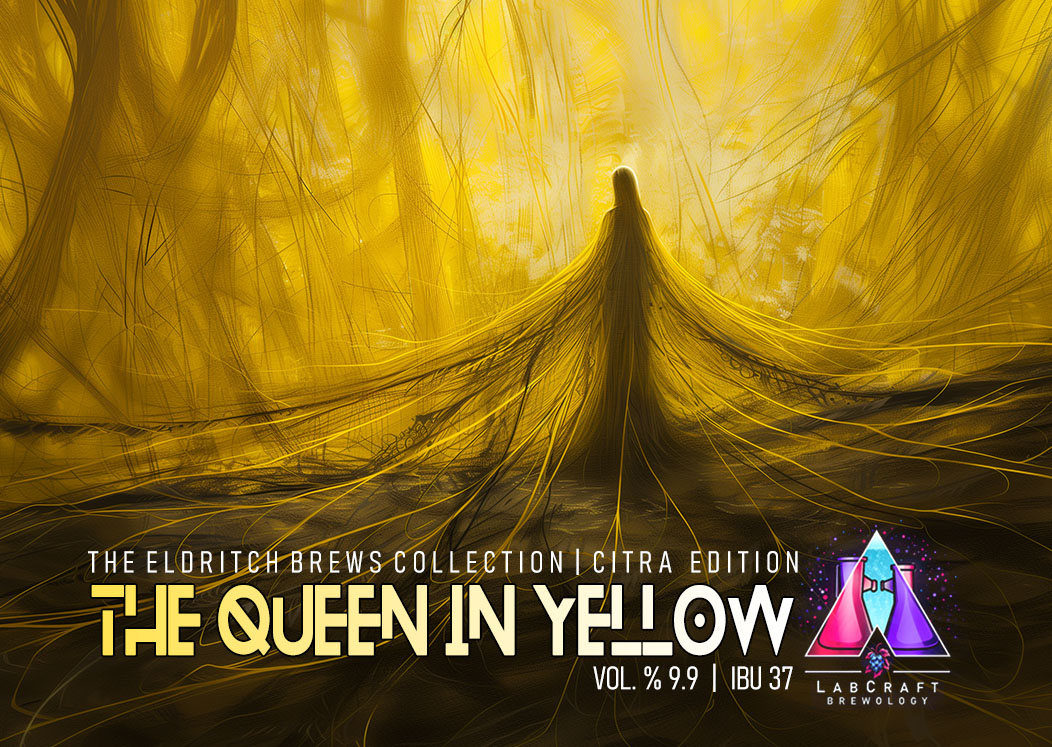


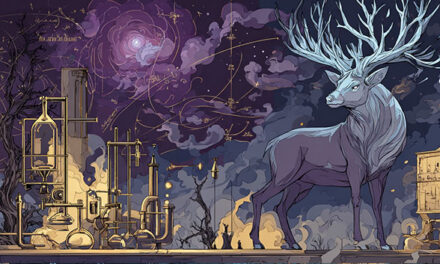






Recent Comments